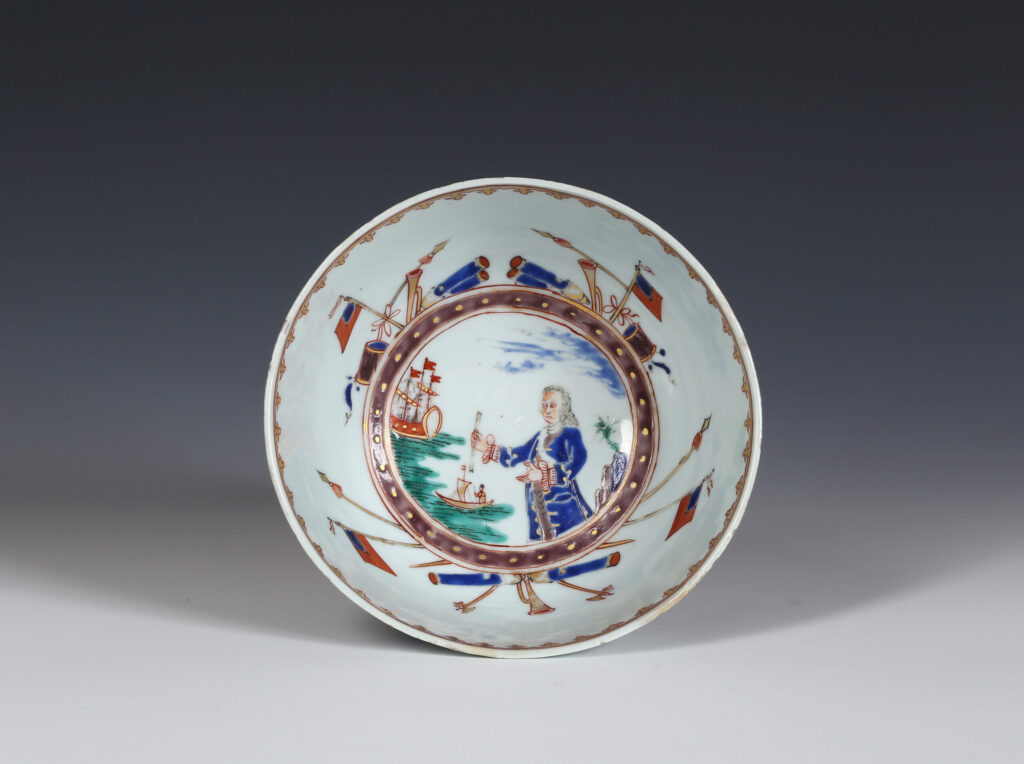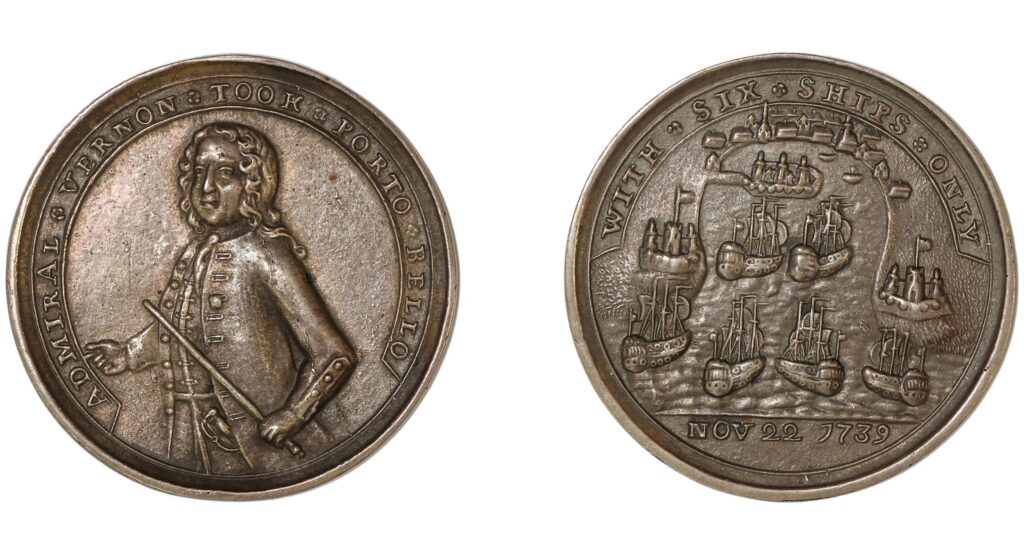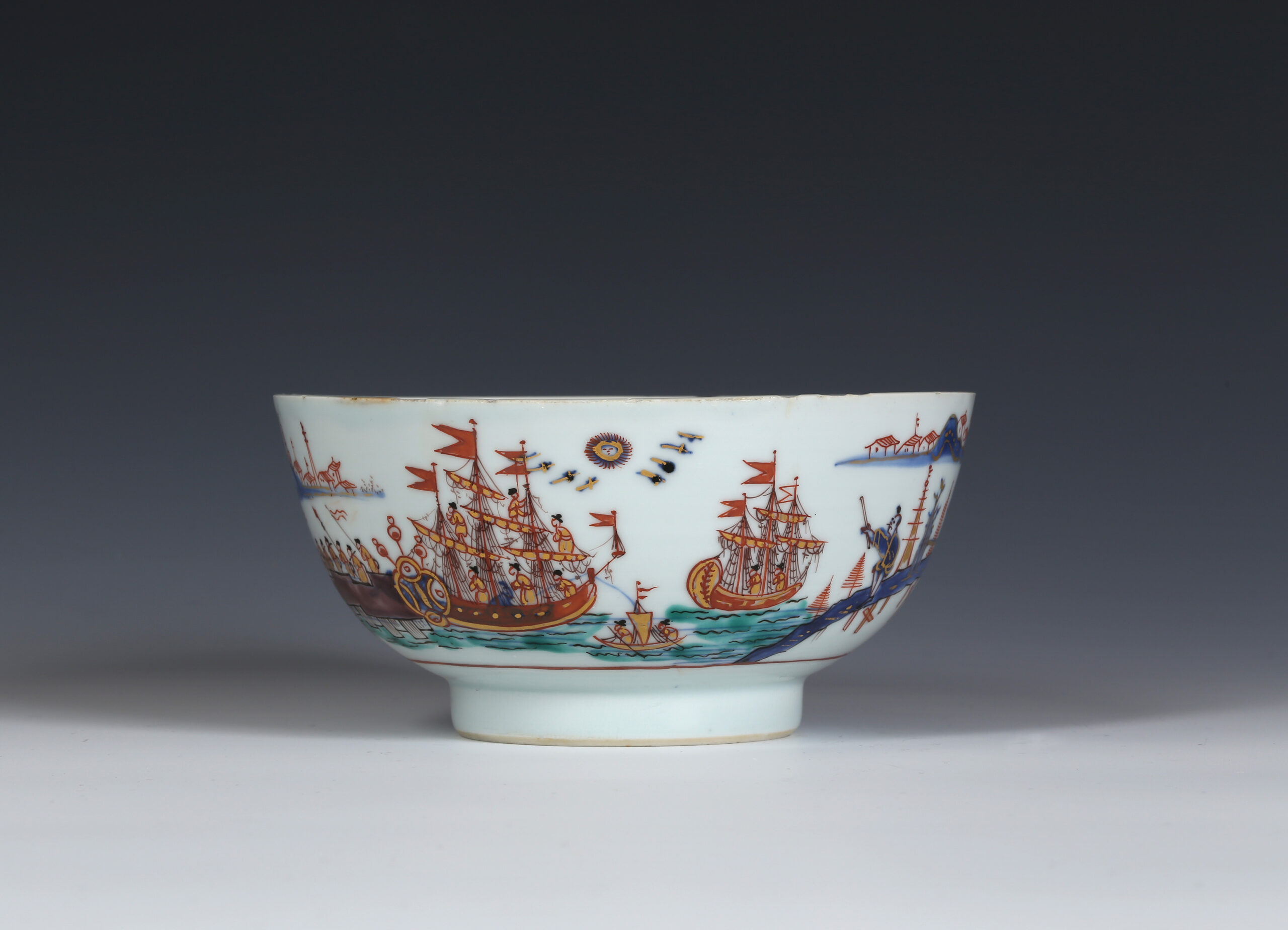
Vernon was the toast of the town after his spectacular capture of the fortress of Portobello on November 22nd, 1739, during the War of the Austrian Succession, sometimes known as the War of Jenkins’ Ear. This feat was commemorated in numerous prints and as many as 130 different medals were struck in his honour, more than for any other naval hero of the time.

The Admiral is depicted holding his baton in a pose popularised by the medals and prints, within a border of naval trophies and Red Ensigns.[i] The palette, including the rather muddy blue and a distinctive aubergine, has developed little since the earlier type of decoration tat was being practiced towards the beginning of the century (see ‘capuchin’ cup, Manners 2024, catalogue number 55). John Sandon first pointed out the small sunburst with a face on the exterior that seems to almost be a signature of this London Workshop.
Two other bowls of this design in private collections are known to us.
[i] In the 18th century the Red Ensign was not, as it is now, the flag of the Merchant Navy but referred to a naval squadron or an independent command, see Timothy Wilson, ‘Flags at Sea’, 2nd edition, 1999, pp. 25 and 26.
Condition:
numerous minute frits to the rim
Literature:
Espir 2005
Helen Espir, European Decoration on Oriental Porcelain: 1700-1830, (Jorge Welsh Books, 2005), p. 220, fig. 20
Hanscombe 2008
Stephen Hanscombe, The Early James Giles and his Contemporary London Decorators, (London: Stockspring Antiques 2008), p. 49, no. 9
Manners 2005
Errol Manners, ‘The English Decoration of Oriental Porcelain. Some overlooked groups 1700 –1750’, Transactions of the English Ceramic Circle, vol. 19 part 1, 2005, p. 16, fig. 37a & b
Manners 2024
E & H Manners , ‘Decorators of Ceramics and Glass’, 2024, no. 57
Price: £3,800



